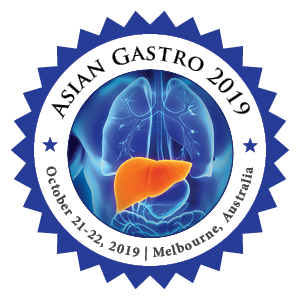Rima Arini
Padjadjaran University, Indonesia
Title: Abstract: Abdominal pain is a common adult presentation to emergency departments, outpatient clinics and general practitioners. Although rare, intussusception, a process whereby a segment of the intestine telescopes into the adjoining intestinal lumen, may be the source of pain in adults that present with non-specific abdominal pain. Imaging is the mainstay for intussusception diagnosis, and requires prompt accurate interpretation to prevent complications. A case of a middle-aged male is presented, whom self presented to the emergency department with a four-day history of non-relenting abdominal pain; associated with nausea, vomiting and constipation. Examination revealed involuntary guarding, worse on the right side and the presence of bowel sounds. Following blood tests, CXR and CT imaging, the patient was discharged from the Emergency Department with a suspected passed renal stone. Within days, the patient re-presented to the GP with similar abdominal pain – prompting the GP to request a review of his CT images. It was found that the initial radiologist failed to recognise the subtle presence of intussusception. These findings highlight that, although relatively uncommon, intussusception should be considered as a differential diagnosis in adult patients presenting with intermittent abdominal pain. Moreover, radiologists need to be familiar with the clear, and subtler, radiological signs of this diagnosis. Upon diagnosis, treatment depends on the underlying cause and can vary from conservative treatment to surgical intervention.
Biography
Biography: Rima Arini
Abstract
Introduction: Sacrococcygeal teratomas are rare tumors that develop at the base of the spine by the tailbone (coccyx) known as the sacrococcygeal region and is a congenital (present at birth) growth or tumour that develops at the base of the spine just above the buttocks and its a relatively uncommon tumor affecting neonates, infants, and children with a female preponderance. Age is an important predictor of malignancy in sacrococcygeal tumors.
Case presentation: We report a rare case of congenital type III cystic teratoma that may be falsely diagnosed as an anterior sacral myelomeningocele. A 1-year-old female patient complained of swelling in the coccyx area and a few weeks later his stomach felt enlarged. On x ray examination, soft tissue mass was found in the coccyx area with decree in the area. Ultrasound shows a solid and cystic components and fluid in the stomach. CT scan examination shows the inhomogenic hypodense mass with a relatively regular border septaic is in the upper abdomen to the pelvic cavity which seems to be related to the left sacrum mass with a size of 17.5 x 8.7 x 16.4 cm in the upper abdomen to the pelvic cavity that appears to be associated with a left sacral mass measuring 5.4 x 4.4 x 6, 6 cm. Then surgery is carried out with the technique of wide resection of benign lesions with coccygectomy, we found that the cyst consisted of a mostly thin, white wall, but also with small posterior narrow nodules.
Conclusion: Early diagnosis and complete excision with removal of the coccyx is associated with good prognosis, so it will help in the selection of management quickly and precisely

